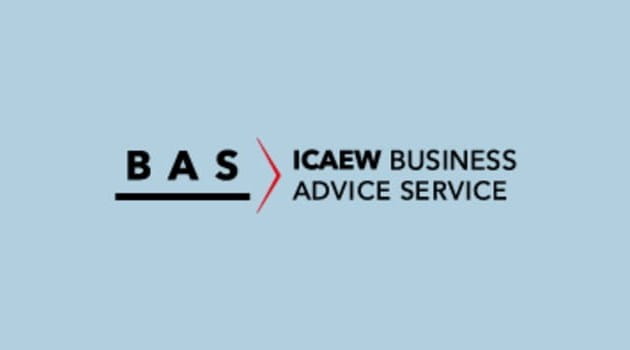“Everyone's experiences are different,” says ICAEW member Asif Ahmed, Founder and Managing Director of Acclivity Advisors. He points out that most investment knowledge sits with those who come from business or finance backgrounds – not necessarily with entrepreneurs from other fields – and it is vital that this information flows to where it is needed if founders are to be supported in bringing their ideas to market.
“If you take the example of someone who wants to open a shop selling cakes, they wouldn’t necessarily think that their business could raise funding in the same way as a technology business,” he says. “And the reason for that is that these investment concepts have never been codified to the point where someone could look at them and think: ‘I can do that’.”
So, what might a company look like that is ready for an angel round? “That company must commit to being investable,” says Ahmed, “as opposed to being a lifestyle business.” It is not unusual for businesses to start off as hobbies that turn into commercial enterprises, then into commercial enterprises with further potential. “At some point in that journey, the entrepreneur has to let go of the hobby part and focus on the business part; the systems, governance and potential.”
Becoming investable does not just mean increasing revenue and therefore profit by a small multiplier. It means creating velocity out of scale. “That’s the starting point at which you're really talking about building a business as opposed to expanding a hobby, and, and that is where an angel round can be meaningful,” says Ahmed. “It’s where you start testing your hypothesis for what we call ‘product/market fit’.”
That is the crux of angel investment – whether it is from family, friends or investors – it is about using their money to test the hypothesis, as opposed to doubling down on a successful hypothesis – which is what a professional/institutional investment round is all about.
Next up is the question of what a deal should look like. What should a founder surrender to receive that angel investment? “A business would typically start off with any number of founding shareholders. It could be me by myself, it could be me and my partner(s) and we would probably own 100% of the business between us.” Then it would be a case of ascertaining the value of what has been built to date because of these efforts, and then pitching to an angel investor why it is reasonable that the business should be valued at, let’s say, £1m right now. “There could be a combination of tangible and intangible metrics that go into formulating that £1m valuation,” says Ahmed. Those metrics could relate to booked revenue, anticipated revenue, social media followers, identified customer pipeline, and so on.
“It would be a case of me not being able to capitalise on these advantages in my own capacity, but I could do so if I were given the right resources,” he says.
“I would then say to an angel investor that I'm willing to give them, say, 10% of my business for £100,000 based on those assumptions. Typically, I probably wouldn't want to give away much more than 10-15% of the business at the angel investor stage because I must take into account future funding rounds during which I'm going to have to continue to give other investors equity. I will also have one eye on things like ‘voting rights’ and I might never want to get to a point where I own less than the controlling stake, at least in the early stages.”
As to whether founders price themselves wisely, Ahmed says it depends upon the entrepreneur’s background. Those from a business or finance background tend to do a better job of selling themselves, because they, by training, understand their potential instinctively. Others are inclined to be a little more conservative. “Now the reason neither approach is great is that if you oversell yourself, the chances are that you're only ever going to under-deliver,” says Ahmed. “If you undervalue yourself, you could end up giving away more of your business than you needed to.” Hence the need for a professional advisor with financial modelling skills.
Acclivity works largely with young technology businesses, but it also manages a legacy portfolio of multi-generational businesses. The attitudes to investment in this diverse portfolio run the gamut from cavalier to ultra conservative. “What the pandemic did generally was unlock the capacity for alternative financing,” he says. “The pandemic pressed a business reset button. Even the most robust businesses can have the rug pulled out from underneath them, and we saw that. But on the other hand, some young technology businesses were on the right side of the pandemic and business skyrocketed.”
So how does angel investment work? “In the UK, typically, you can incentivise your investors to invest in an infant business by making an application to the Enterprise Investment Scheme or Seed Enterprise Investment Scheme. These schemes enable an investor to reclaim a percentage of their investment via their tax return,” says Ahmed, pointing out that a wise entrepreneur will ask the question of the right professional advisor as to whether or not their business is eligible for the schemes.
“Part of the criteria for being an eligible company is that you will use those funds for growth rather than just keeping the lights on,” says Ahmed. “And that is typically the expectation of an angel round, anyway – no investor is going to invest in you to carry on doing what you're doing unless you can prove that you just need to carry on doing that to everybody's benefit in the long term.
He continues: “The idea is that I am at point A right now. I need your money to invest it for me to get to point D which is where there will be a business operating at real velocity. This would typically require investing in new staff, new equipment, maybe new materials, whatever it might be, but something new.”
He points out that tech companies – the mainstay of Acclivity’s business – will raise angel investment because they may need to hire engineers where they are still building their product, but they may need to hire marketing professionals if their product is already built, and they are needed just to sell it. “What is always the same across all these early companies is that there will be an element of testing going on,” he says. “That is why angel investors get the best deal out of all the investors in the investment cycle. They get the earliest priced equity because very little is known about that business at that point and so the investors are rewarded for the risk profile of their investment.”
What should an angel investor expect following their investment? “In an angel round, it is not necessarily expected that an entrepreneur will regularly report back to the investor, because the assumption is that an angel investor will be somewhat passive,” he says. “However, it's a courtesy for the entrepreneur to write to the angel investors every quarter or maybe twice a year to update them.” The entrepreneur might also want to offer some hypotheses as to why the business is or is not meeting expectations and offer some solutions. It may be that further investment is desired on both sides.
More often than not, the whole angel investment process starts with a conversation with a professional adviser who may be able to plug founders into the investment ecosystem. “If you have an attractive business, getting the money is relatively easy,” he says. “But getting the money from the people that you want the money from, is the hard part. An angel round is largely about accessing the funds to scratch an entrepreneurial itch, to test an idea and see if it has legs.” It is not usually about accessing expertise. “But as soon as that hypothesis gets tested and proved to work, you will naturally see companies switch those priorities as they look to scale and capture a market.”
More support on angel finance
Insights Special: Access to finance
ICAEW Insights examines the finance options and support available to businesses, as well as the challenges they face in obtaining it.



